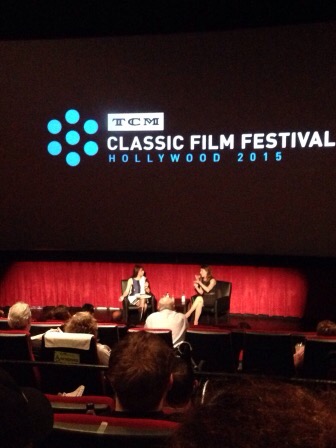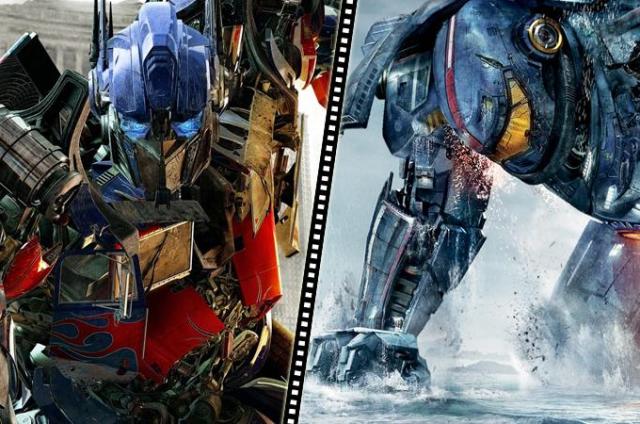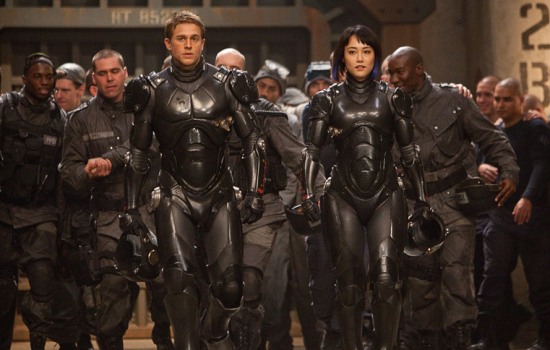Nothing has been more miraculous in the last few years of cinema than the development and execution of the Marvel Cinematic Universe. Not only has Marvel Comics successfully translated many of their properties to the big screen, but they’ve managed to also intertwine the whole of them into a continuing, larger narrative and sustain it for nearly a decade now. It has been a tall order to make sure everything falls into place and to have the payoff be worth it in the end, but so far things have worked out for the best at Marvel. Under the supervision of Marvel Studios head Kevin Feige and backed with the financial support of parent company Disney, the MCU gamble has turned into the envy of every other studio in Hollywood. Now, everyone is trying to launch their own cinematic universe based around their own properties, including a Ghostbusters universe over at Sony and a Movie Monster universe at Universal. Marvel rival DC Comics is also amping up their long dormant characters for a cinematic universe that they hope can capitalize on the same success that Marvel is experiencing. But the reason for the success of the MCU is not just with the characters alone. Extensive planning has helped to make the MCU grow and sustain itself, and this has largely been executed to perfection by building up the universe in Phases. Each phase of Marvel’s master plan does two key things; one it establishes new characters to help populate the universe and let’s them live out their own stories, and two, it plants the elements within each story that will interconnect with the others at some point and ultimately tie each character together into one team.
Though each character’s story stands well on its own, Marvel’s ultimate plan is to have the inevitable team-up of characters, which happens in this Avengers series. When the first phase of the MCU came to an end in 2012, with the release of the first Avengers, many people were skeptical that it could be pulled off. For one thing, an ambitious team up like this had never been done before and putting all these larger than life characters together could have proved overwhelming. Not only that, but the duties of bringing the whole mess together was given over to Joss Whedon, a television producer who had never done a movie on this scale before. But, as it turned out, Whedon was the best possible choice for the job. His years in television, making cult hits like Buffy the Vampire Slayer and Firefly, helped to refine his ability to balance multiple ongoing storylines and put them all together into one narrative. His Avengers pulled off the impossible, having all these monumental characters like Iron Man, Captain America, Thor, and the Hulk share screentime and still manage to get their shining moments in the spotlight. The result was a monumental hit, becoming the 3rd highest grossing movie of all time (behind Avatar and Titanic) and it gave Marvel the confidence to move forward with Phase 2. The second phase of course continued to do the same thing that Phase 1 had done; pressing ahead with the continuing storylines of each Avenger team member, while also establishing new characters, whether as a new sidekick (The Falcon in Captain America) or a whole other team entirely (Guardians of the Galaxy). And now, three years later, Phase 2 is coming to a close with The Avengers once again assembling in the inevitable sequel; Age of Ultron.
Age of Ultron doesn’t pick up where the last one left off, for obvious reasons, but anyone who hasn’t kept up with the MCU won’t be lost either. The movie immediately thrusts the audience into an action scene, with the Avengers teaming up to take down a base of operations for the sinister HYDRA organization. Within their stronghold, the Avengers find artifacts collected from the alien invasion of the first movie, including the staff used by the first film’s villain, Loki. When Iron Man, aka Tony Stark (Robert Downey Jr.) researches the staff, he learns of its highly advanced data properties and sees a way he could use it to bring to life his Ultron program, which he envisions as a way of using artificial intelligence to program Iron Man drones across the world as a peaceful replacement for the Avengers. The plan goes awry when Ultron (voiced by James Spader) comes to life on his own and decides that the best way to save the world is to destroy mankind. After their base is attacked, Stark and the other Avengers, Captain America (Chris Evans), Thor (Chris Hemsworth), Black Widow (Scarlett Johanssen), Hawkeye (Jeremy Renner), and Bruce Banner, aka the Hulk (Mark Ruffalo), quickly scramble to follow Ultron and try to stay one step ahead of him. Unfortunately for the Avengers, Ultron has also put together a team of super powered beings himself; the HYDRA enhanced twins, Quicksilver (Aaron Taylor-Johnson) and Scarlet Witch (Elizabeth Olsen). With a super intelligent and powerful robot creating havoc across the world with two superhuman twins by his side, the Avengers are brought to the brink of their capabilities and even begin to doubt one another, especially when another wild card is brought into the mix in the form of the android hybrid, The Vision (Paul Bettany).
Just like the first Avengers, this movie is also a big gamble. Not only must it live up to the lofty reputation of the original, but it has to tie in everything else that has happened in the Marvel Universe to date. And given how complicated things have gotten in Phase 2, that’s easier said than done. So, taking into account all of this, it’s actually quite amazing how well this movie works as it does. One thing that Joss Whedon does exceptionally well is character interactions and building towards a climax, both of which are the highlights of this sequel. There’s no shortage of witty banter between the characters (especially the one-liners delivered by Tony Stark), but there’s also a lot of clever nods and references to everything from other Marvel properties to even Archie comics and Disney’s Pinocchio (1940), something that’s a trademark of Whedon’s style. He also manages to pay off a lot of loose threads from the Marvel cinematic universe and also plant the seeds for the future in a way that feels both rewarding and exciting. Essentially this is a movie made by fans of the comics for fans, and probably the only place where fan service is not only welcomed, but encouraged. Even if it’s something that doesn’t have anything to do with the larger narrative, like the numerous cameos from secondary characters of the MCU (and yet another from Marvel Generalissimo Stan Lee), it’s still is a welcome inclusion that adds to the enjoyment of the whole. But even with all that, the movie works well on its own as an action movie. The film’s big set pieces are exciting without ever being flashy, which helps the audience keep track of what’s going on. It runs the fine balance within the plausible impossible, where over-the-top things happen throughout, but never in a way that defies logic, at least in a comic book world.
But, even with all the great elements throughout, it’s not free of flaws either. While still a worthy edition to the Marvel Cinematic Universe, I wouldn’t exactly consider it the best we’ve seen from Marvel to date either. If anything, I’d say it achieves the goal of being a worthy follow-up to the first Avengers, and nothing more. The most problematic thing about the movie, and what keeps it from being absolutely perfect, is the fact that it has way too much going on in it. Essentially the plot is one long string of action sequences, with very few breaks in between. Now, connected with all the other movies in the MCU, this relentless pace might make more sense, because it works as the climax for all of Phase 2. But as a standalone movie, there’s not enough time for the plot to catch its breath and develop an identity for itself. Some of the rich character history has to be sacrificed and plot arcs that usually take up entire acts are instead condensed into a single sequence. The creation of Ultron is especially rushed in this movie, and he goes from gaining consciousness to enacting his sinister plan within a matter of moments. Now, with a movie as packed as this one, you obviously have to cut down quite a bit to make everything fit, but one can’t help but feel that something also gets lost in the shuffle. Also, the fact that so much has to be set up for future movies can also be a distraction, especially for those in the audience who have no connection to the comics whatsoever. The references to the Infinity Stones will almost surely please anyone who’s a fan of the comics, but any other casual viewer might come away from this film scratching their heads.
One thing that proves to be both the film’s strength and a problematic element is also the characterizations. When you’ve got a jam-packed cast like this, some character development is going to be lost. Hopefully most of you will have already seen the previous Captain America and Thor movies, because both characters are given almost no character development here. And sad to say it Marvel, but Fox made a better and more entertaining Quicksilver than you in their movie X-Men: Days of Future Past from last year; despite a noble effort by actor Aaron Taylor-Johnson. There’s also some shaky attempts to try to make up for lack of character development by throwing in a romantic plot thread in there for Black Widow and Bruce Banner, which is charming but doesn’t really fit into the plot. But what does save the movie from its shortcomings are the performances. Everyone here is comfortable enough with the characters by now and that maturity helps in a long way to move the movie along. Probably the character who benefits most in this sequel is Hawkeye, who actually gets a big boost in screentime. Jeremy Renner’s grounded performance really helps to make his Hawkeye stand out from the rest, and his courage in the face of overwhelming odds helps to underline the mission of the team itself; something he even states in a perfectly delivered monologue late in the movie. James Spader also brings in a lot of personality into the villain Ultron, and helps to save the underdeveloped character from being a disappointment overall, thanks to some very snarky wisecracks; although it does minimize the menace of the character, which is something of a negative. Probably the best addition to the cast, however, is The Vision. He comes into the movie late, but boy does he leave an impact, and Paul Bettany plays the character to perfection.
If there is anything that does get improved upon from the last Avengers, it would be the sense of scale. The first film was exciting, but lacked any real visual punch, except maybe in the closing battle scene. Here, the movie opens up and takes the Avengers on a globe-trotting adventure. There are no longer any long stretches confined to a single location, like where half of the first movie was set on the S.H.I.E.L.D. Helicarrier. The Avengers do battle in places as diverse as a cityscape in an African metropolitan city, the secluded woods of a fictional Eastern European nation, and even on a floating rock in the sky. Visually, it also looks like Joss Whedon has learned a few a lot more tricks since his first cinematic outing with these characters. The original film was shot in the confining flat aspect ratio of 1.78:1, but here he shot the movie in the widescreen 2.40:1 ratio, which gives Whedon a wider canvas to work with. The whole movie is all together more interesting to look at and shows that Whedon is no longer working in the mindset of how his project will look on television but instead is focused on making it look as epic as possible. Though the process of getting from one scene to another is on shaky ground, each scene still is worth the wait and pays off in a big way. One especially high point in the movie is the showdown between the Hulk and Iron Man wearing his Hulkbuster suit, and it’s a visual feast that lives up to the epic potential of that match-up. If there’s anything that Joss Whedon can be proud of with this film, it’s that it’s shows his maturity as a filmmaker and that he indeed can have a visionary style that can stand up beyond what he’s able to do on television.
So, even with all its shortcomings, Avengers: Age of Ultron is still a worthwhile film to see and a great way to start off this summer movie season. Is it perfect? No, but given all the complications and pressure put upon it, it’s still remarkable how well it does work in the end. Sadly, the overwhelming success of the Marvel Cinematic Universe has raised the bar so high that it makes it nearly impossible to clear nowadays with every new entry. Ultron may not be the best, but it comes close enough to that high bar to be worthy of the legacy. I certainly was smiling throughout most of the movie, but part of that is because I’ve followed along with every Marvel movie to date, so I understood every inside reference and plot thread that relates to the larger universe. Casual viewers may not understand it at all and wonder what all the fuss is about. But even still, I doubt very few people are going to come away from this disappointed. It’s still got all the great character interactions and action set pieces that define a great Marvel movie, and even a few pleasant surprises. Not only that, but the spot on casting of the characters continues to pay off for this series, and it only makes me excited to see the team grow even more as Phase 3 gets started, leading us ultimately to the much anticipated two-part Infinity War. It may not be Marvel’s crowning achievement to date (for me, that would be the more tightly plotted Guardians of the Galaxy), but still it’s worth the long wait. When the world’s mightiest heroes assemble together, how can anyone not want to see them in action.
Rating: 8.5/10

































